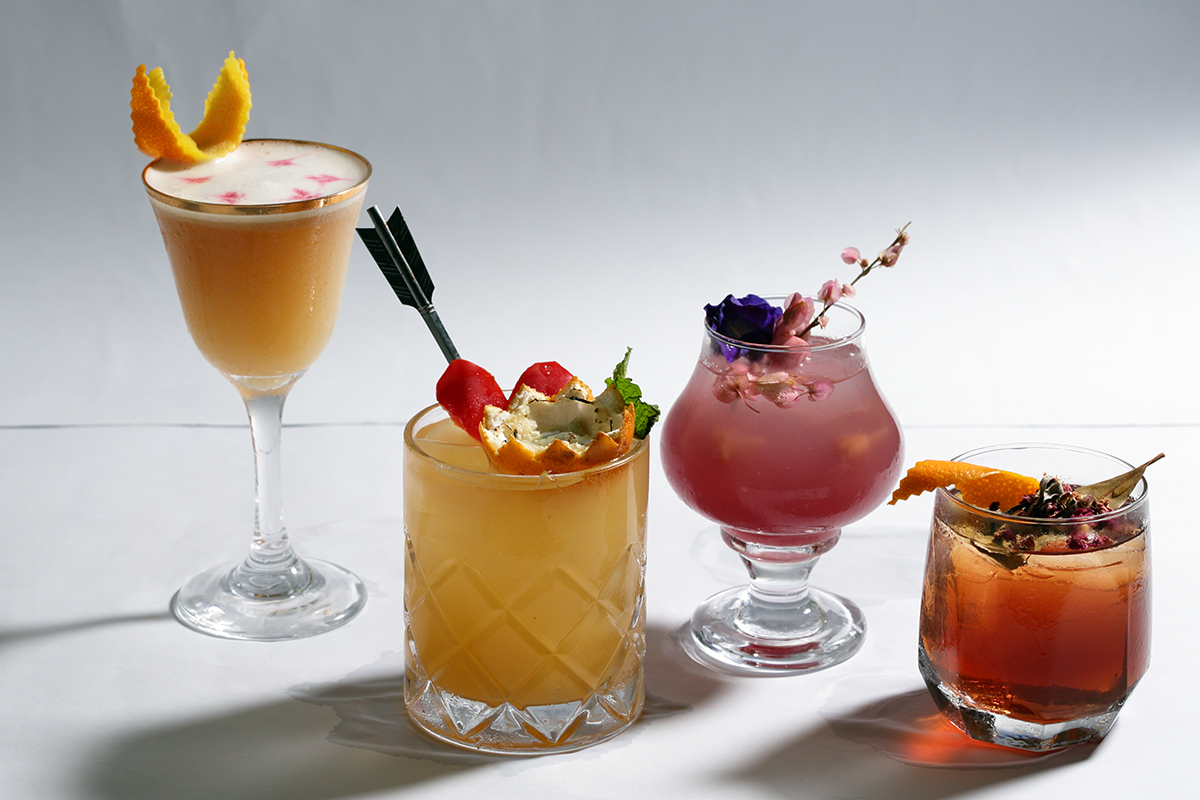Credit it both to youth and the availability of options, but the drinking millennial crowd in general just has a more adventurous palate, to the point that they’re driving the four most popular flavor profiles in the local cocktail landscape: bitter, sour, spicy, and botanical.
The first three are easy to understand. Among bitter cocktails, the negroni is the flag-bearer of the classics that emerged during the heyday of speakeasies while the whiskey sour embodies the best of the acidic, lip-smacking delight of sour drinks. Mixologist and Manila’s Liquido Maestro Kalel Demetrio says this drink is loved by many, “and the most recent trend is balancing its body with an egg white.” As for a famous spicy cocktail, the Bloody Mary rules with its use of Tabasco sauce. “It’s also known to cure hangovers.”
Botanical cocktails can be confusing to some, though. “The ‘botanical’ flavor is often one of the most misunderstood because those who consider themselves ‘macho’ think of it as ‘feminine,’ which is really not the case,” Liquid Concepts Philippines COO and principal bartender Larry Guevara explains. The misconception can be due to the drinks’ flavors, notes, and even aromas that are derived not just from herbs and spices but also from flowers like lavender, hibiscus, elderflower, and even sampaguita. Says Demetrio, “These cocktails are rich in flavor due to ingredients that used to be [reserved only] for chefs but are now a bartender’s allies too.” In fact, for Niner Ichi Nana mixologist Mark Herrera, floral-derived homemade syrups work really well with certain “masculine” spirits like gin. “For example, there’s our Aviation cocktail that has gin, lemon juice, and crème de violette, which gives it that botanical flavor.”
“The ‘botanical’ flavor is often one of the most misunderstood because those who consider themselves ‘macho’ think of it as ‘feminine,’ which is really not the case,” Liquid Concepts Philippines COO and principal bartender Larry Guevara explains.
Sweetness is missing on the hot list, though Demetrio assures that it’s a quietly pervasive element. “Sugar is present in every concoction. It’s just that its level in drinks has gone down, compared to when bars used a lot of industrial syrup and strong flavors and colors. Our bartenders’ knowledge about flavors has since grown, so every ingredient put in every glass is carefully highlighted.”
All three credit the dynamism of the local drinking scene, trending drink flavors and all, to the millennials’ fascination for the products they consume. “They consider not only how a cocktail looks but also its presentation as we’re in the social media era now,” remarks Herrera. “They’re still exploring drinking, so finding flavors they like is a trial-and-error thing.”
“They’re also drawn to the how’s and why’s of certain drinks and flavor combinations,” Guevara adds. Young drinkers are curious about the reasoning behind the use of certain ingredients, the mixology techniques applied, even the type of ice used, “which motivates us to step up our bartending skills.” He notes, though, that access is key for a drinker, millennial or not, to develop a more sophisticated palate.
Given the almost unlimited access to information about other drinking cultures as well as the growing expertise of local bartenders about craft cocktails, this hot list will definitely evolve soon. Herrera says, “Our beverage scene is booming as more Filipinos learn the art of drinking. They’re up for the challenge of trying something new they’ve seen or heard.” But whether it’s clinking bottles of Pale Pilsen at a street corner or nursing cocktails at a trendy bar, pakikisama remains the most enduring flavor in Filipino drinking across all ages. “Regardless of the flavor changes and the demands for quality and well-crafted drinks,” Guevara concludes, “we always find something good to celebrate together about.”
Originally published in F&B Report Vol. 14 No. 3





